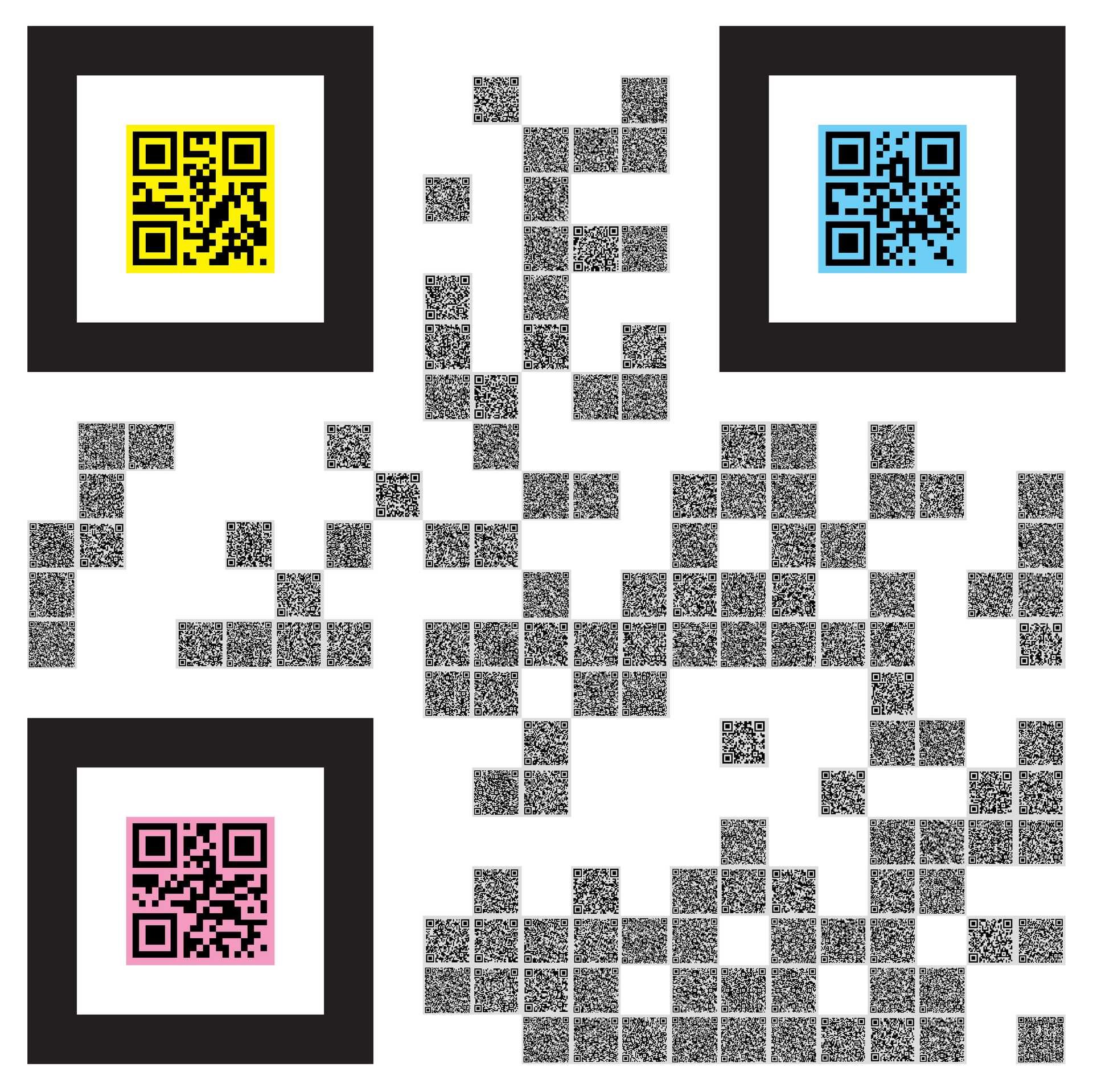The Trinity in QR Code
What you’re looking at is a QR code unlike all other such codes. They have become prolific in marketing campaigns because they allow smart phone users to point their camera at the image then get a quick response (QR) that usually takes them to a website with further information without having to remember or type in a long URL. It can also be used to share contact info on business cards, encode some bit of text, and much more. Those unfamiliar with QR codes can think of it as a souped-up bar code.
I wanted to find a way to use this technology to bring people information about God rather than some product or service I’m trying to sell. An easy way to do this would be to encode a URL to some Bible passage. One could create a collection of these codes about a particular topic, but how might you arrange those codes in a meaningful way that represents the over-arching concept?
The answer I arrived at was this three-level zoomable QR Code. The first level is a code that simply returns the text: “God.” The second level is shown in the colored squares which are normally solid squares that serve as alignment markers. These represent the three persons of the Trinity: Father, Son, and Holy Spirit. The third level is the area with the smallest squares which are usually a solid color arranged according to normal QR code specifications.
The density of information makes it the smallest codes appear to be a black square a a distance, enabling the reader to return an accurate result at the higher level. When pointing a camera close-up or zoomed in on the image, these individual squares represent 129 different Bible passages that tell us more about each person of the Trinity, the relationships between them, and our relationship to God.
Beyond the directly encoded text, this work is a metaphor for the Trinity and the Bible itself. The allusion to the Trinity corresponds to the three different levels of the code which represent a single Godhead. The parallel with the Bible is a bit more subtle, but just as relevant. Taken on the whole, everyone knows the Bible speaks of God. One has to get just a little deeper to know that it’s talking about a Triune God. Go deeper still with your studies to discover more details in specific passages.
Another interesting aspect of QR Codes that they have in common with the Bible is the “error-correction” properties of it. What this means is that some portion of it can be destroyed or be otherwise unreadable and yet the overall code retains its message accurately. When we compare Scripture with Scripture, unclear or isolated portions become understandable when put within the greater context.
I would encourage anyone with a mobile device capable of reading QR codes to play around with the zoomable version. Most smartphones can read it in the camera app. It works best with low glare and low ambient lighting. You can also get this as a poster to put up in areas where tech-savvy people may take a second glance to dive into it and hopefully learn more about who God is.
